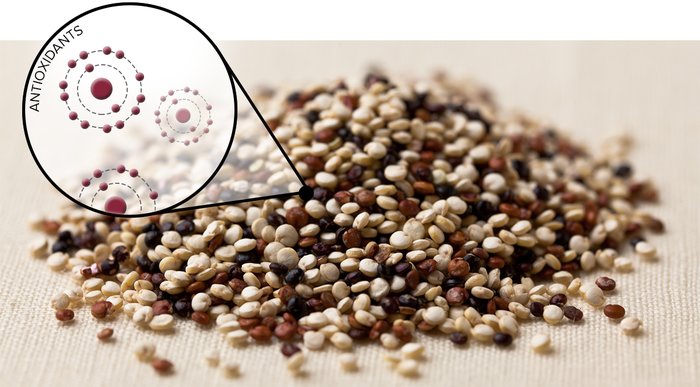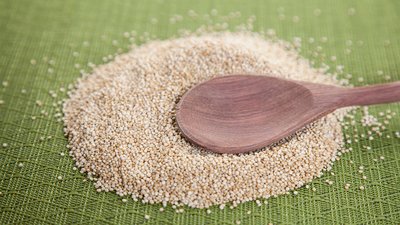Indigenous to South America and considered a sacred food staple in countries like Bolivia, quinoa was nearly wiped out by Spanish conquistadors in the 16th century, only to experience a renaissance as a supergrain in modern times.
It wasn't long ago that quinoa was considered exotic and rarely found on store shelves. But due to a rise in the popularity of gluten-free eating, quinoa has become a supermarket fixture. Its reputation as a nutritional powerhouse has also helped quinoa work its way into more pantries than ever. And harried cooks appreciate that it takes about half the time to cook as brown rice.
This poster child of nutritious gluten-free grains should find a place in your fitness diet, and these recipes make it easy for quinoa to nourish your body from morning to night.
Reason 1: Quinoa Is Rich in Antioxidants
As with fruits and vegetables, eating more quinoa will infuse your diet with antioxidants, compounds that prowl the body looking for cell-damaging free radicals to "mop up." For this reason, a higher intake of antioxidants is thought to be an important part of the equation in the battle against various diseases. Antioxidants like those found in quinoa might aid in exercise recovery by helping to limit the damage muscle cells experience after a vigorous workout.

Beyond the more customary beige grains, quinoa now comes in packages of red or black. Pigments that give black and red quinoa their striking hues are potent antioxidants; in fact, research shows colored quinoa can pack a bigger antioxidant punch than the paler counterpart.[1] They also tend to be less grassy tasting and have firmer textures, making them ideal for salads.
Reason 2: Quinoa Is High in Protein
One cup of cooked quinoa provides about 8 grams of protein, but it's not just any old lackluster plant-based protein we're talking about here. Quinoa is a "complete" protein, meaning it contains all nine essential amino acids—similar to animal proteins.
Of particular importance, quinoa contains the amino acid leucine, the same amino acid abundant in whey protein. Leucine is especially effective at promoting muscle repair and anabolism.[2]
Reason 3: Quinoa Comes Loaded With Fiber
Quinoa is a great way to infuse your diet with an extra dose of fiber. One cup of cooked quinoa delivers 5 grams of fiber (men and women should aim for 38 and 25 grams a day, respectively).[3] That's an important dietary perk, considering higher intakes of fiber have been linked to lower blood pressure.[4]

And since fiber promotes feelings of fullness, via its power to slow digestion and support blood-sugar levels, adding more high-fiber foods like quinoa to your daily diet could help put the brakes on overeating and mindless snacking.
References
- Tang, Y., Li, X., Zhang, B., Chen, P. X., Liu, R., & Tsao, R. (2015). Characterisation of phenolics, betanins and antioxidant activities in seeds of three Chenopodium quinoa Willd. genotypes. Food Chemistry, 166, 380-388.
- Mota, C., Santos, M., Mauro, R., Samman, N., Matos, A. S., Torres, D., & Castanheira, I. (2016). Protein content and amino acids profile of pseudocereals. Food Chemistry, 193, 55-61.
- Trumbo, P., Schlicker, S., Yates, A. A., & Poos, M. (2002). Dietary reference intakes for energy, carbohydrate, fiber, fat, fatty acids, cholesterol, protein and amino acids. Journal of the American Dietetic Association, 102(11), 1621-1630.
- Aljuraiban, G. S., Griep, L. M., Chan, Q., Daviglus, M. L., Stamler, J., Van Horn, L., ... & Frost, G. S. (2015). Total, insoluble and soluble dietary fibre intake in relation to blood pressure: the INTERMAP Study. British Journal of Nutrition, 114(09), 1480-1486.

